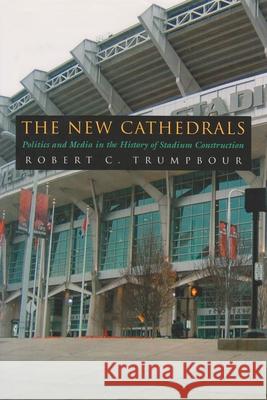The New Cathedrals: Politics and Media in the History of Stadium Construction » książka
The New Cathedrals: Politics and Media in the History of Stadium Construction
ISBN-13: 9780815631323 / Angielski / Twarda / 2006 / 373 str.
Stadium construction has altered the physical landscape of many major metropolitan areas throughout North America and has had a profound psychological and economic impact on these urban centers. How athletic facilities have been constructed, from the ritual-centered beginning of stadium construction in ancient Greece to largescale construction of professional sports facilities in present day global centers, reveals a culture's values and priorities and how it defines its recreational needs. With in-depth analysis and research, Robert C. Trumpbour examines the political institutions, commercial entities, civic leadership, and media organizations that influenced new stadium construction. The author analyzes three significant recent historical periods: the Progressive Era when modern fireproof stadiums were first built; the late 1960s and early 1970s when multipurpose football stadiums were built in downtown areas to promote urban redevelopment; and the late 1990s when retro ballparks were built to employ novel measures for profiteering. Charting this evolution, Trumpbour convincingly argues that there has been a dramatic shift in the role of the media, one in which media access has emerged as a vital element in setting the ground rules for the stadium construction debate. Written in lucid, jargon-free prose, this book combines a detailed history of stadium construction with an analysis of current stadium issues that provides a rich, portrait of our cultural landscape.











